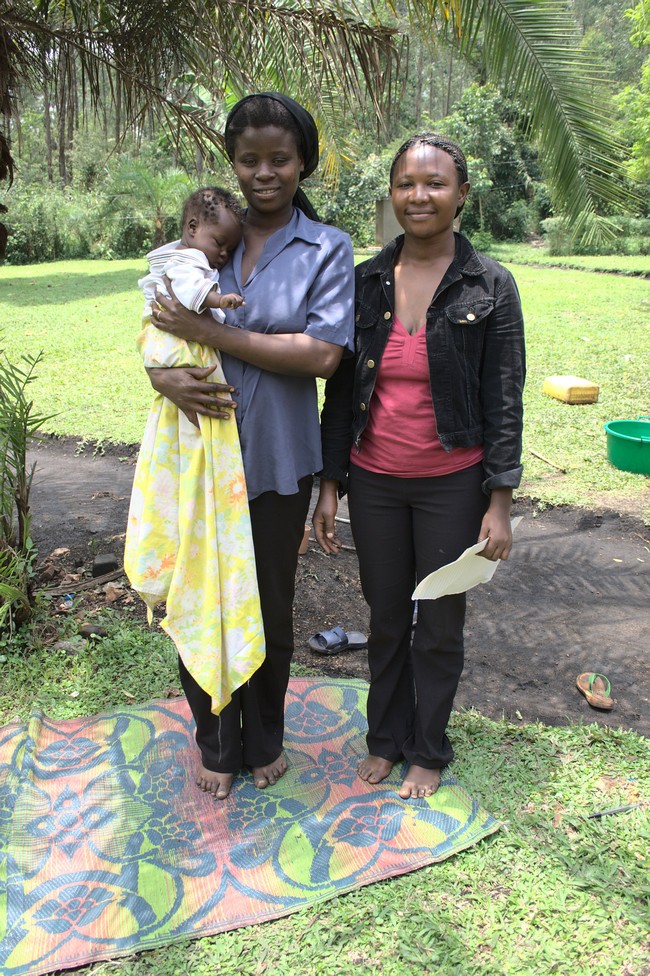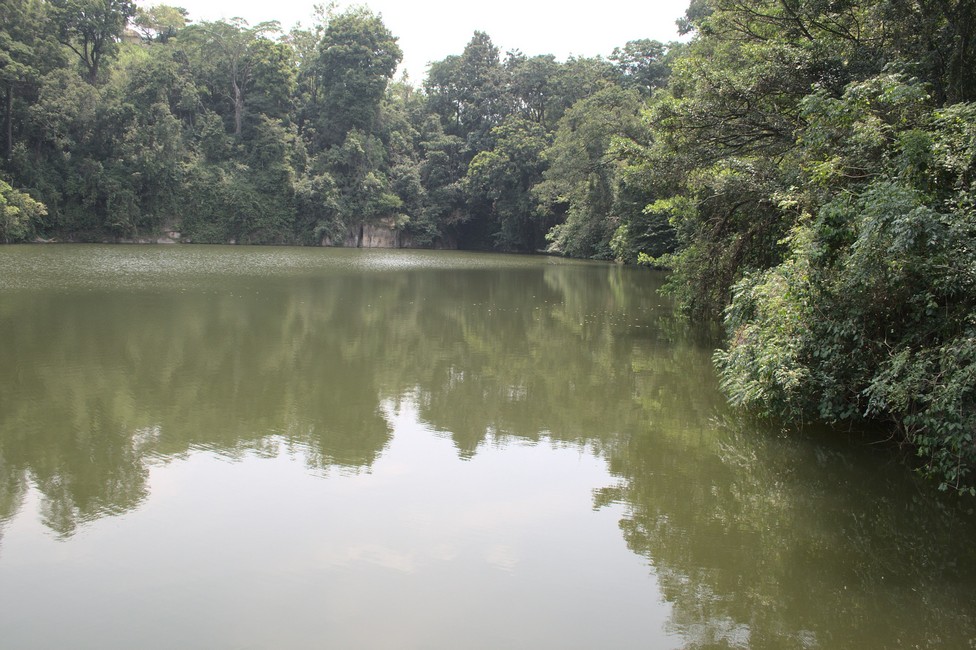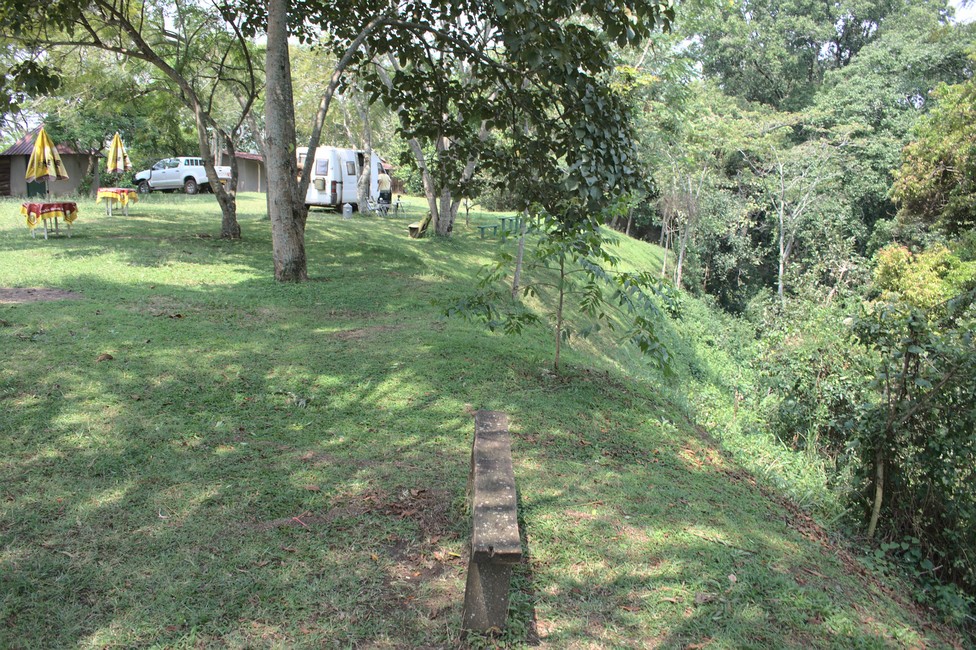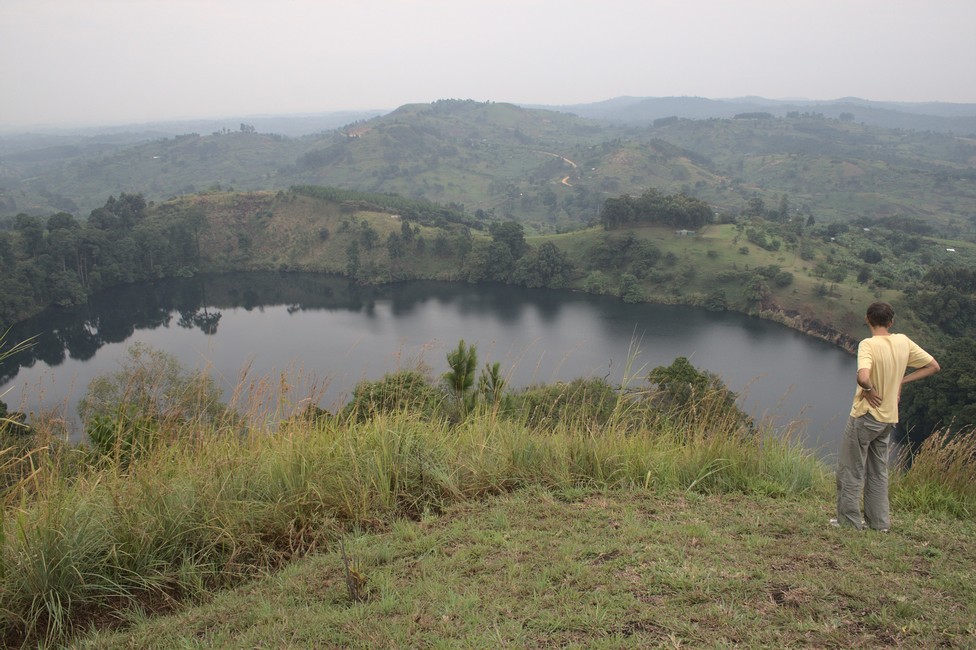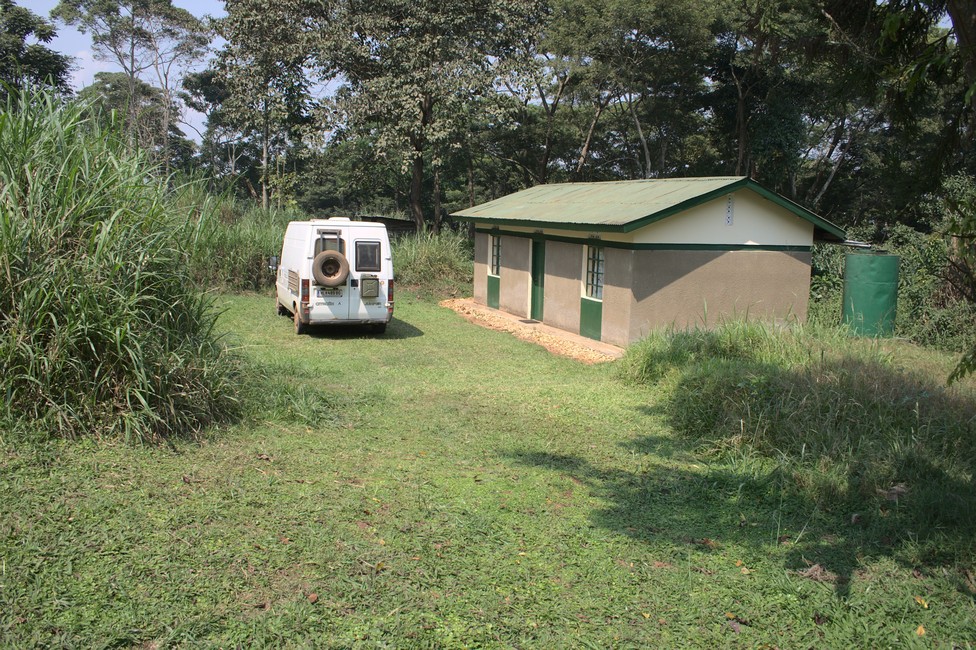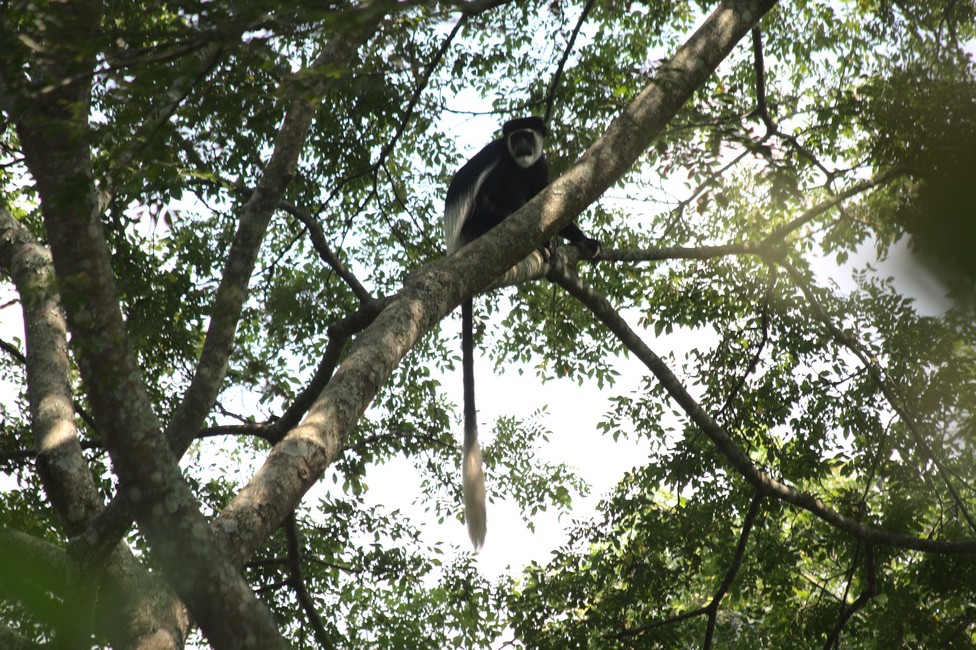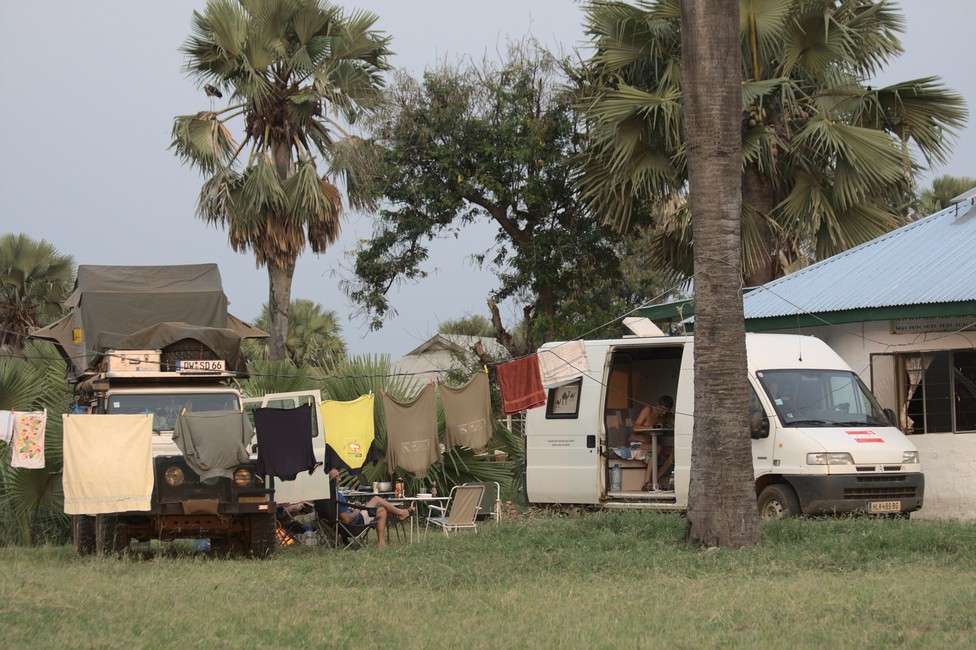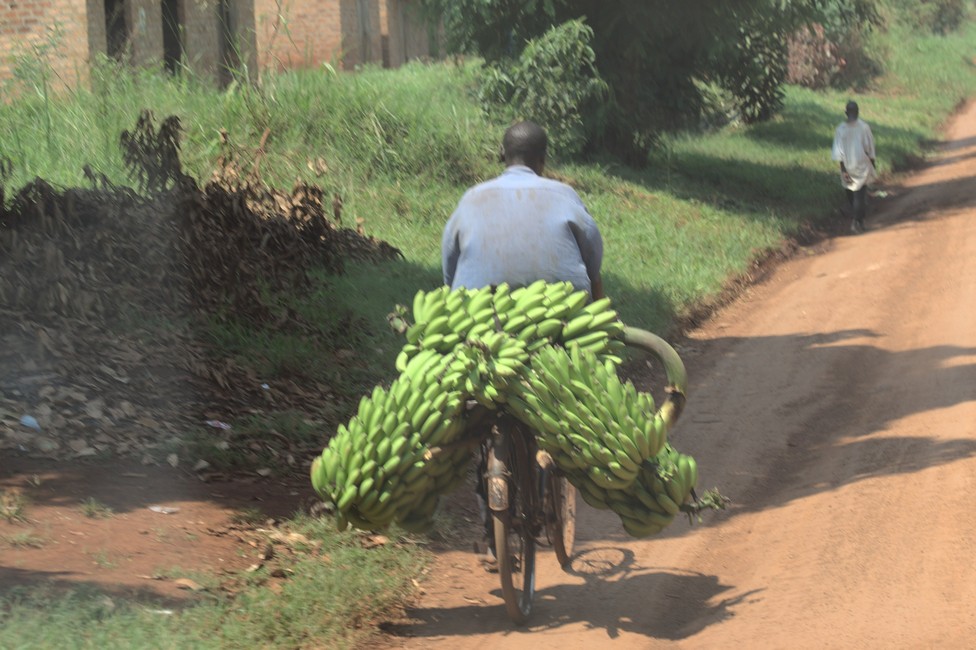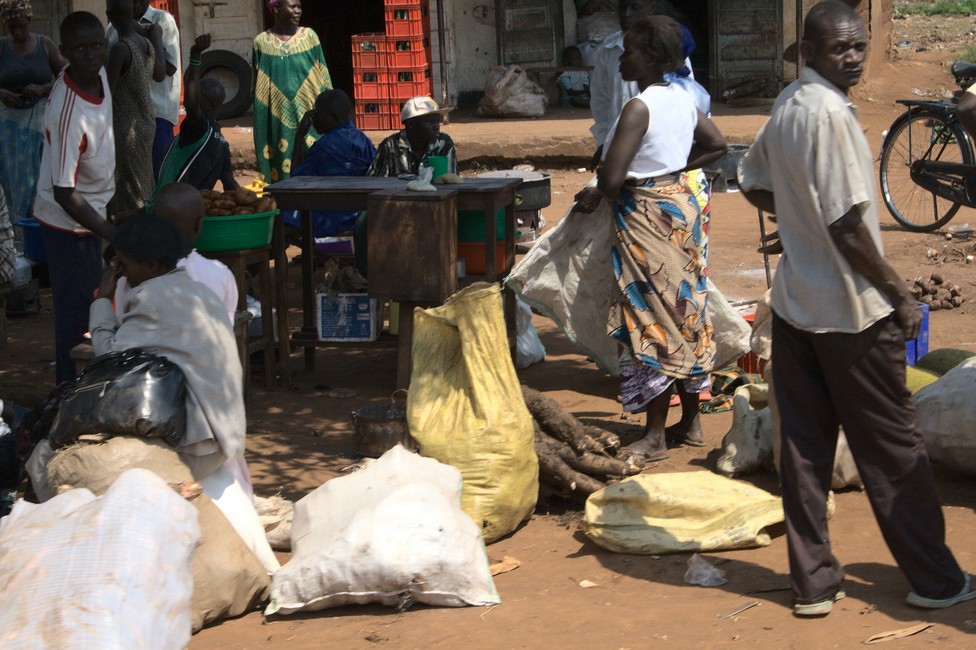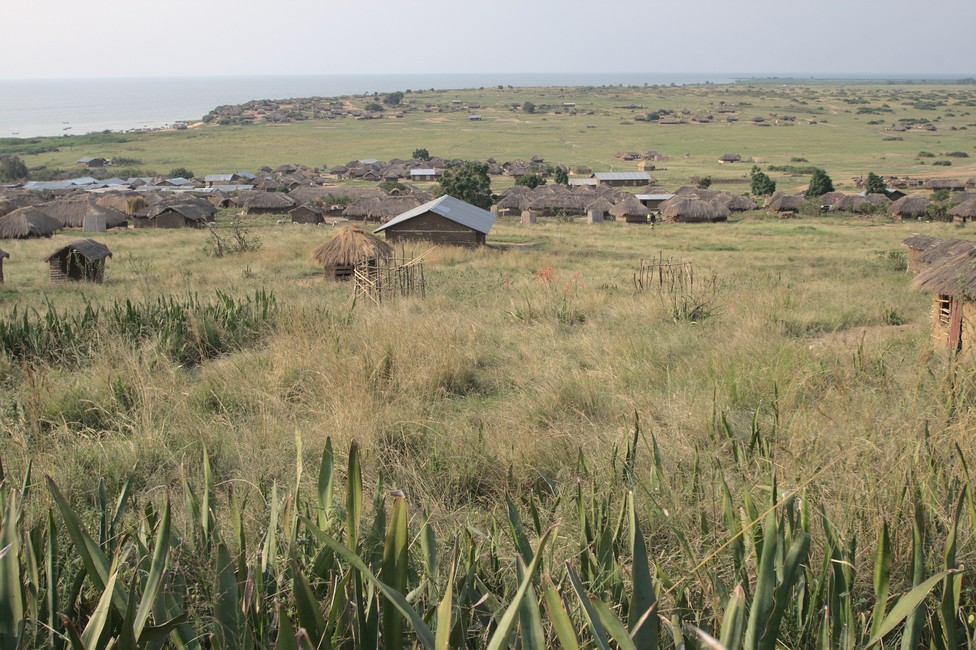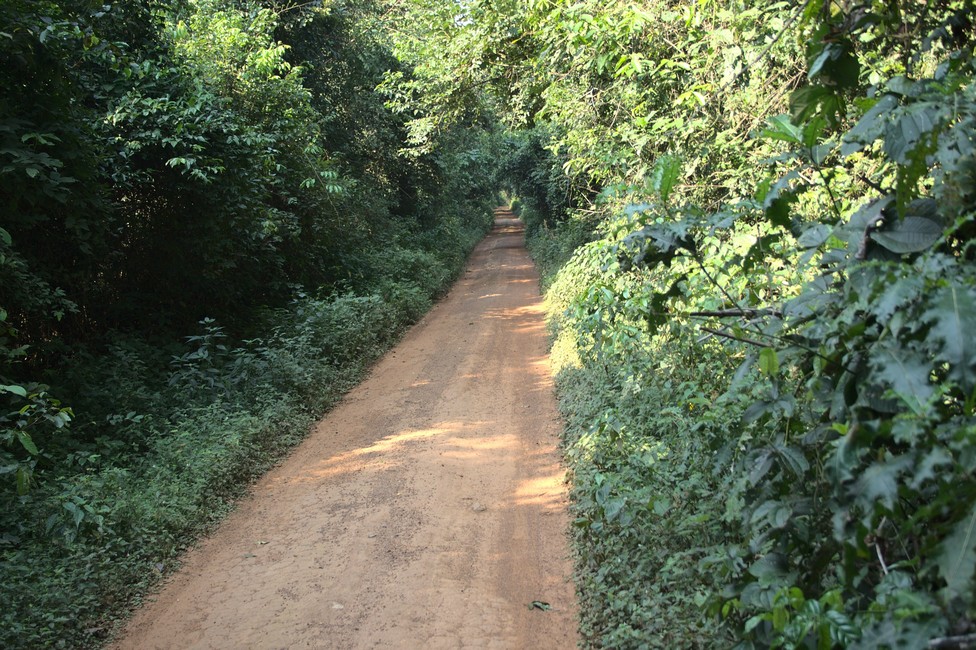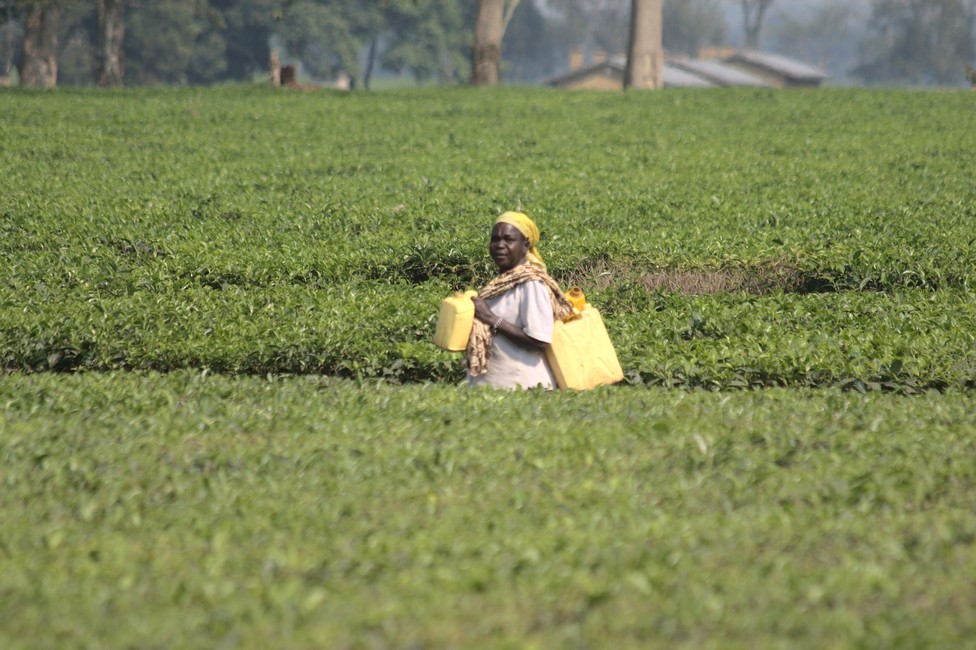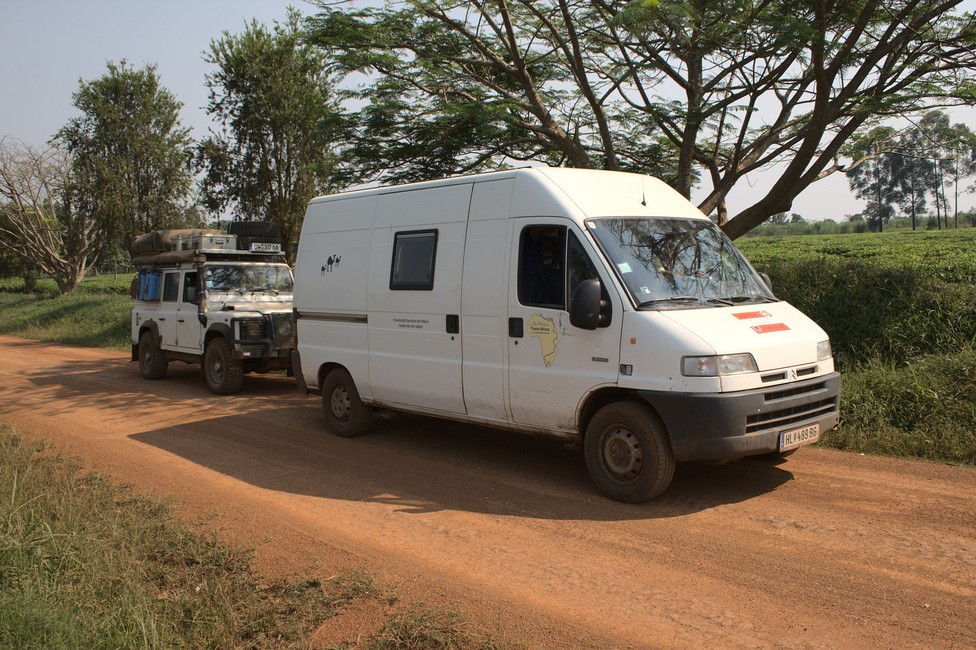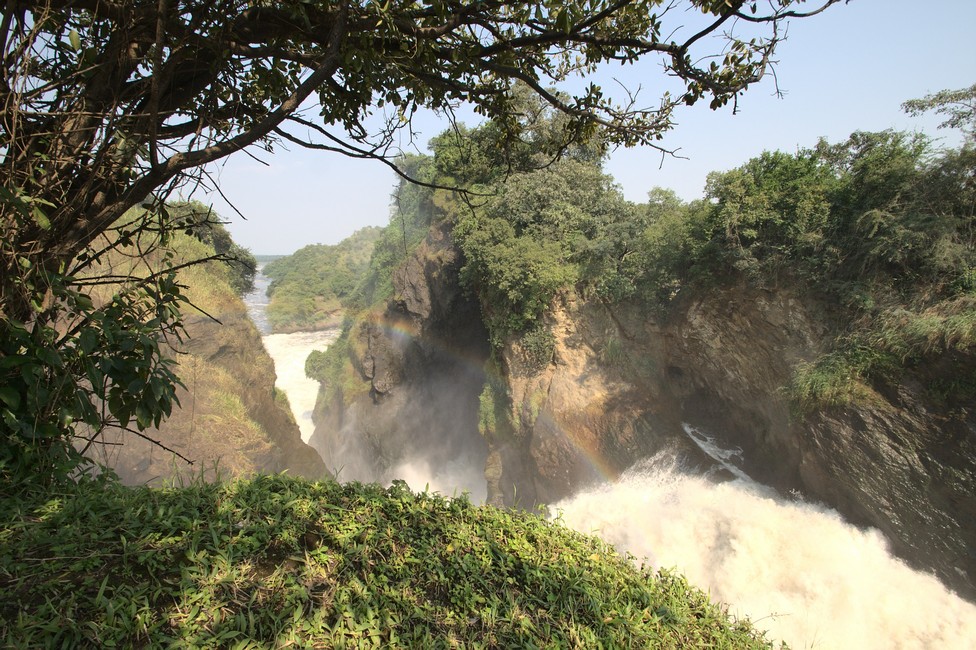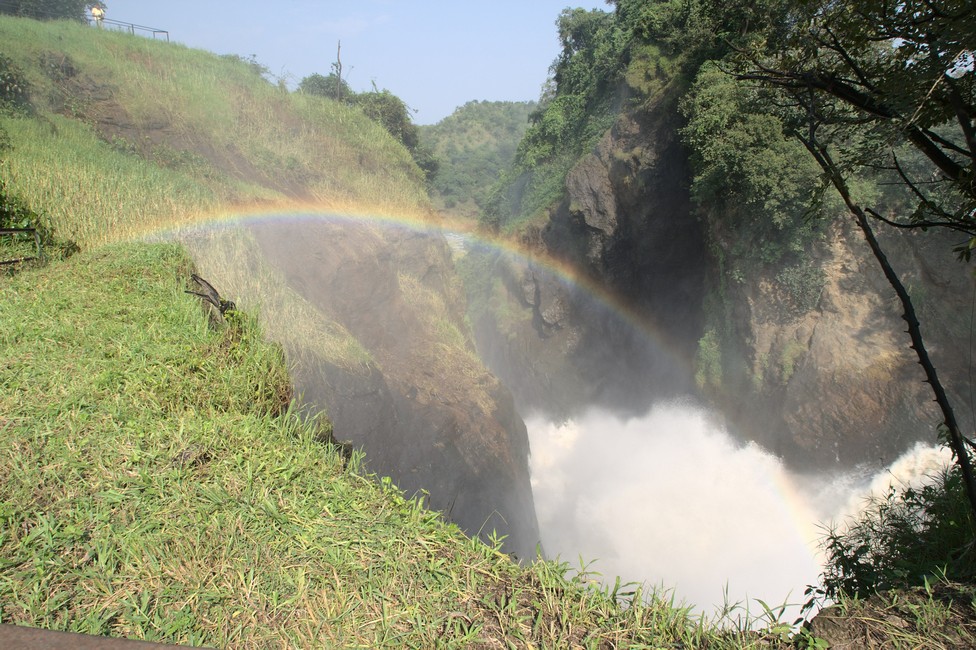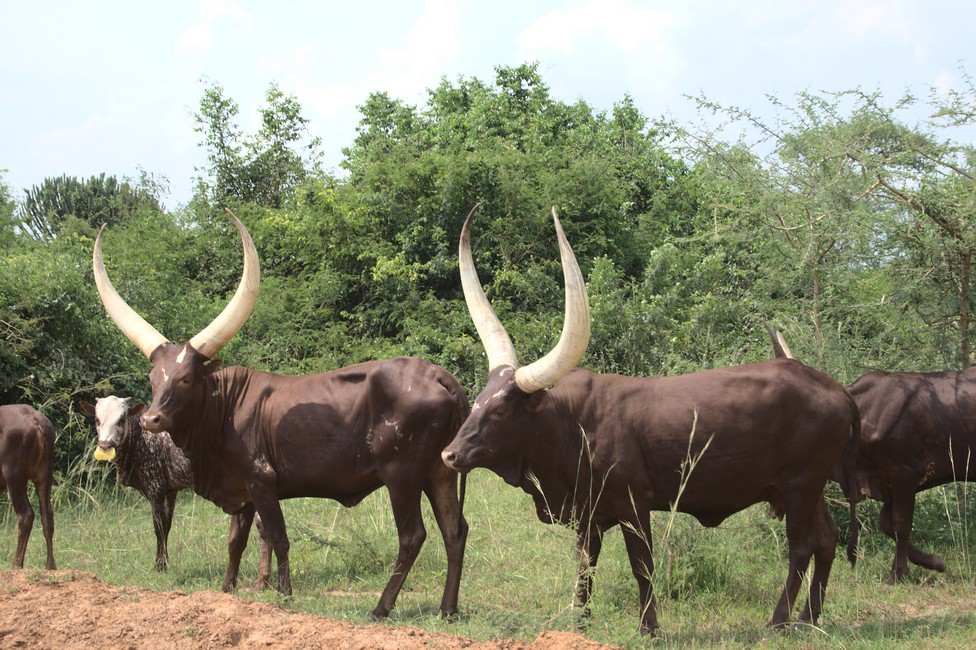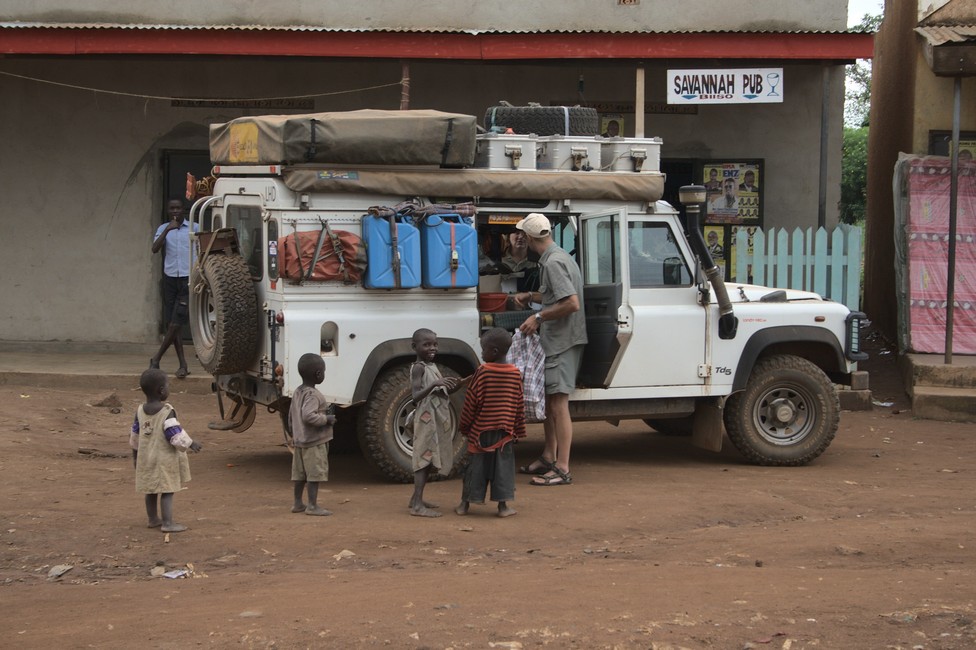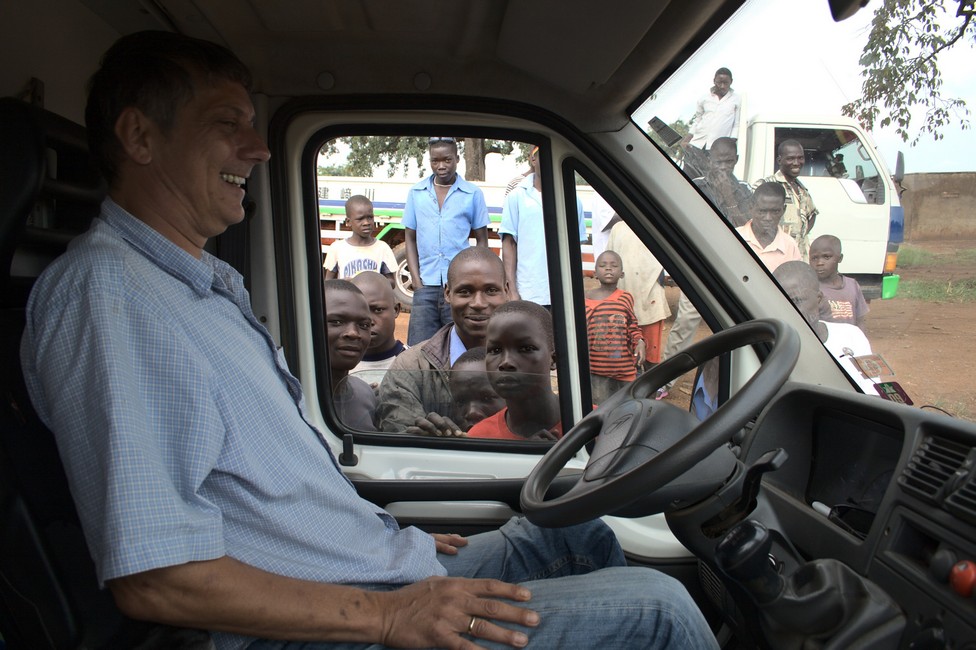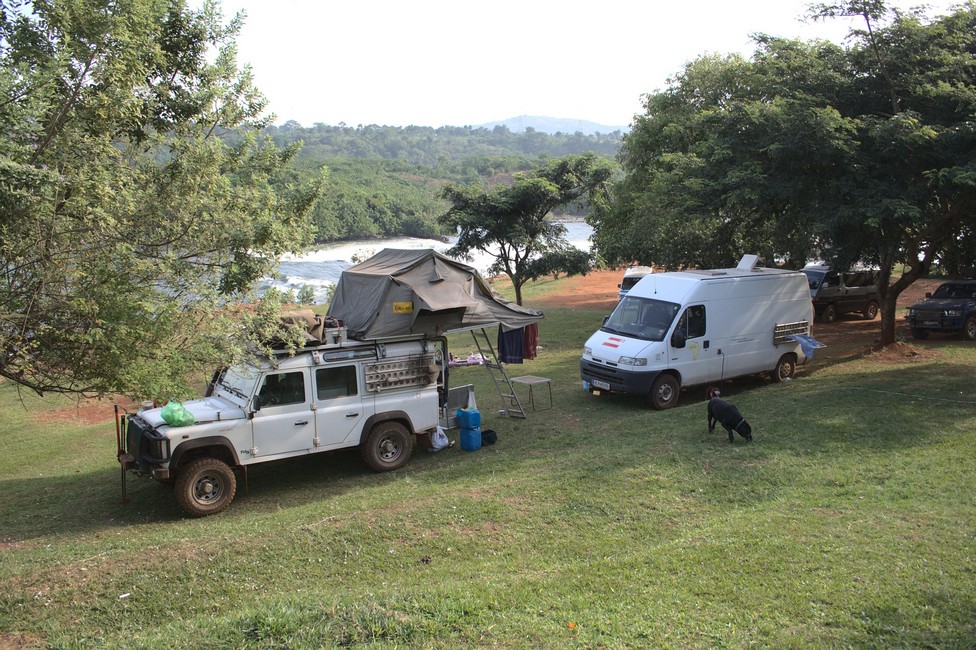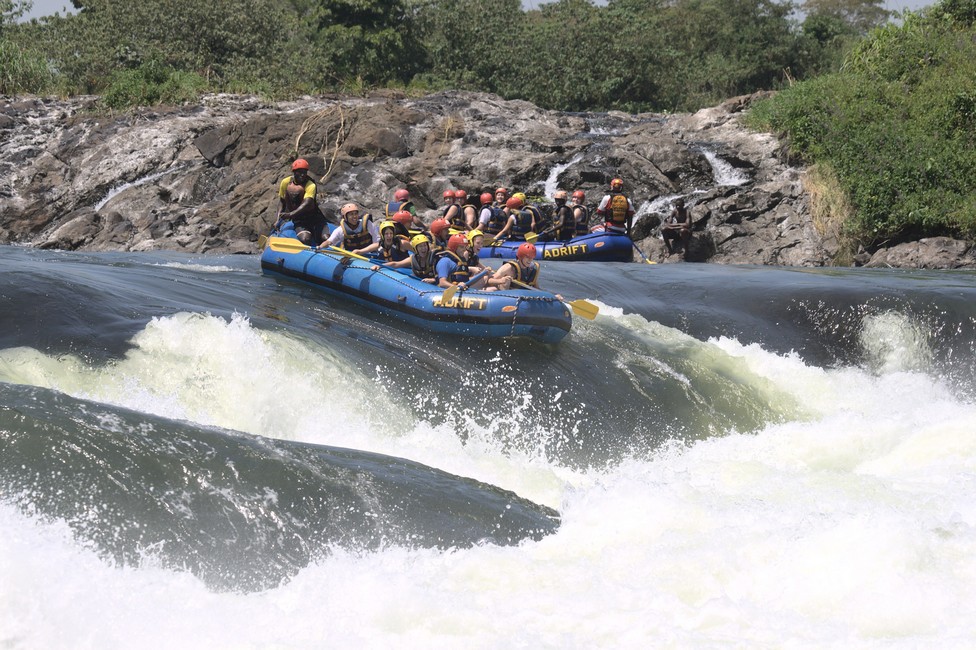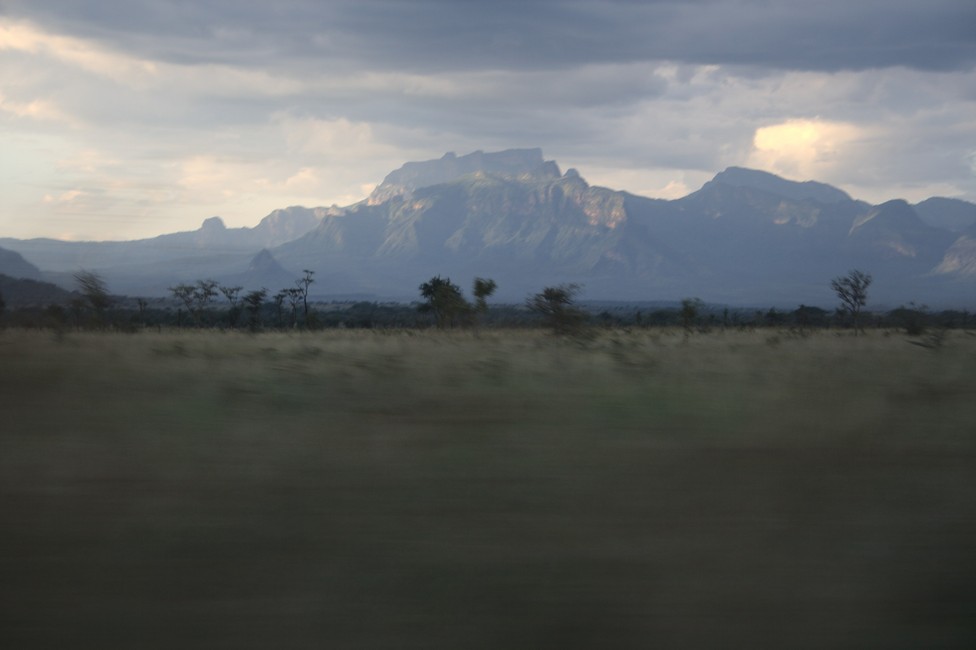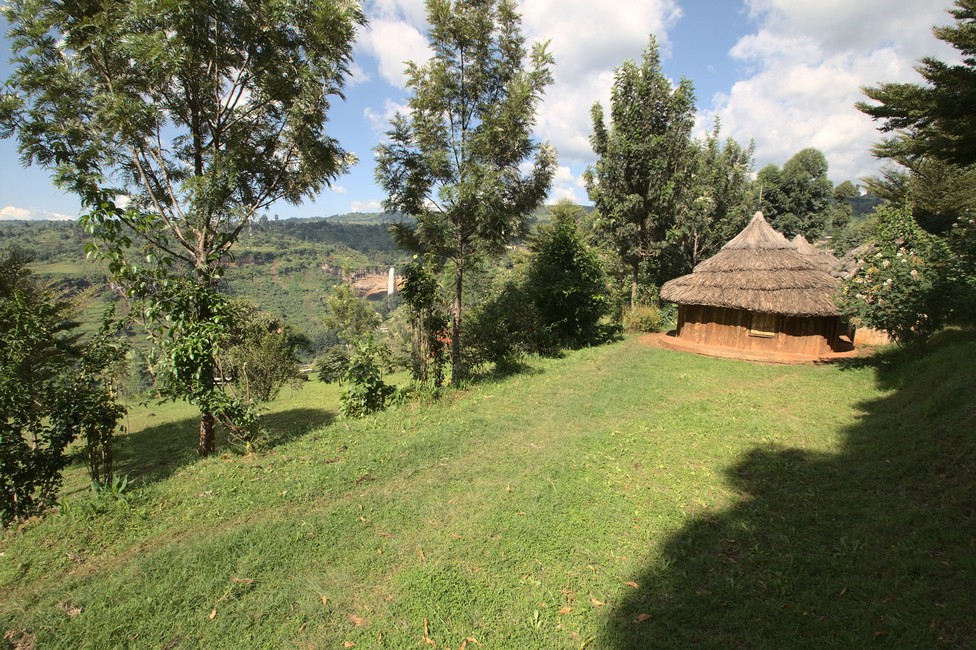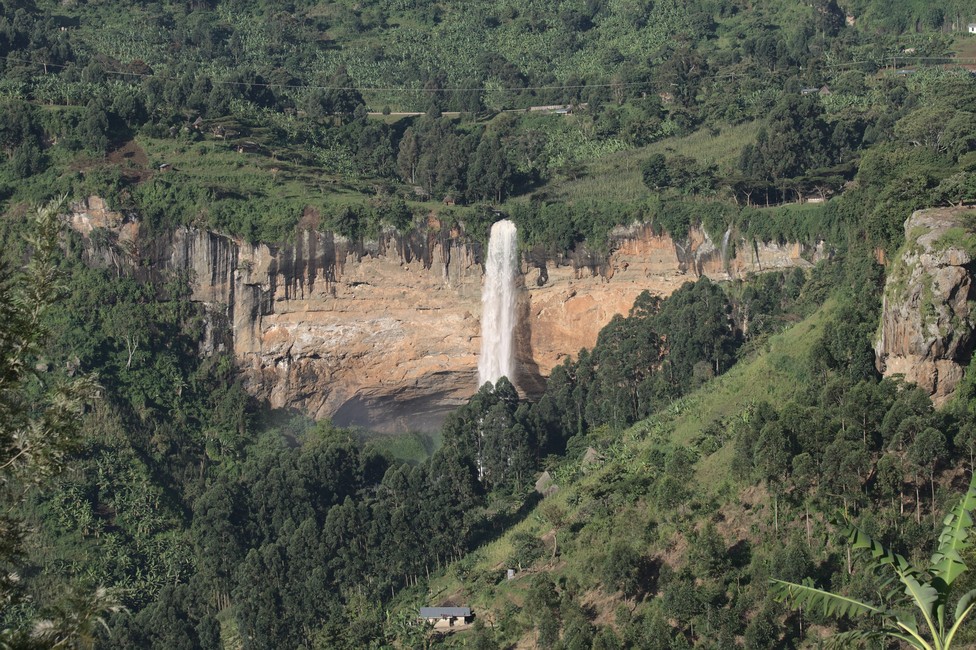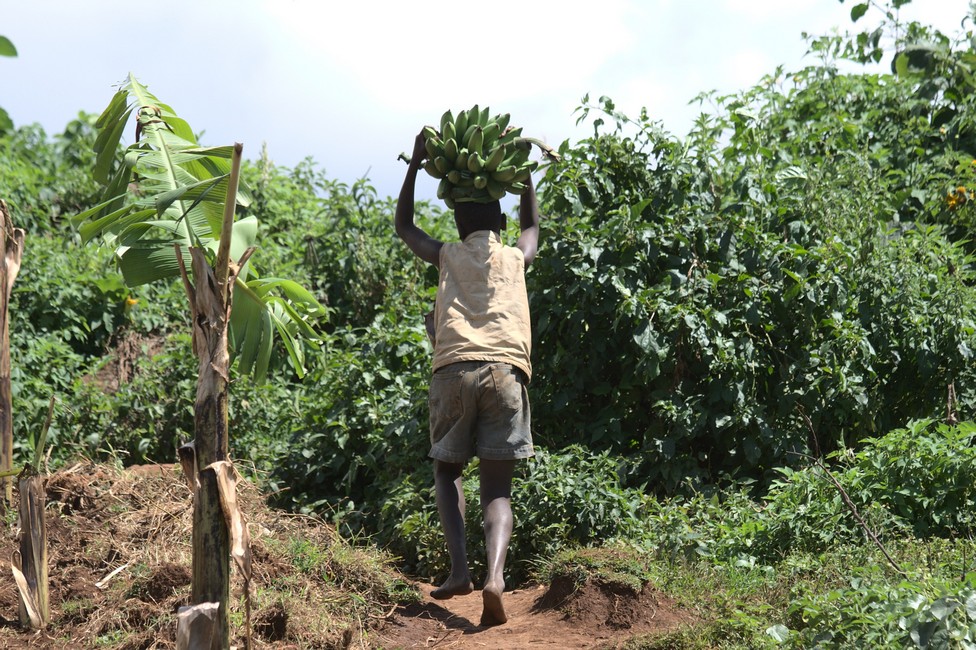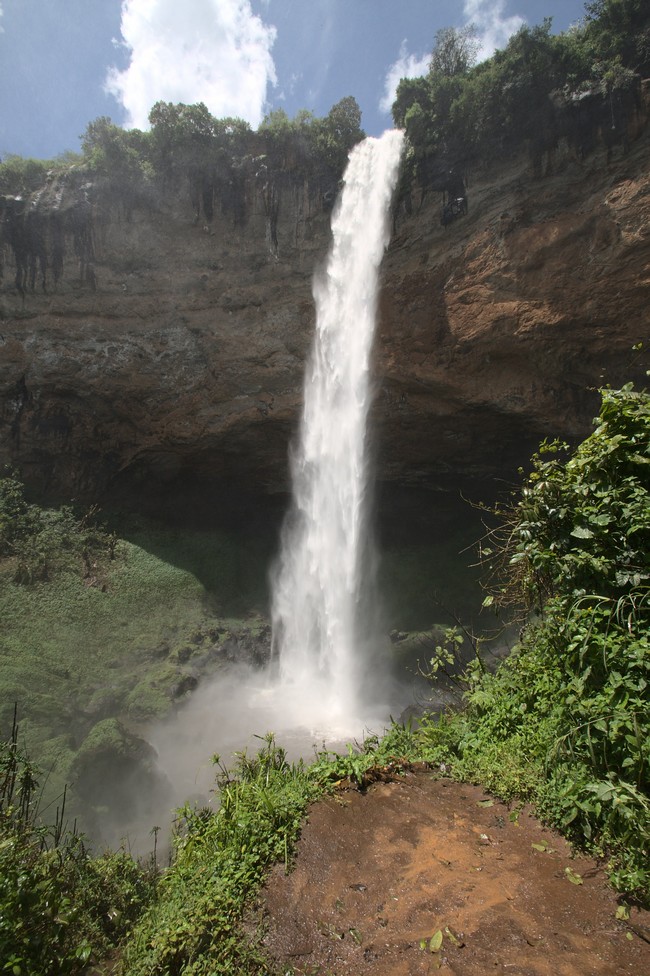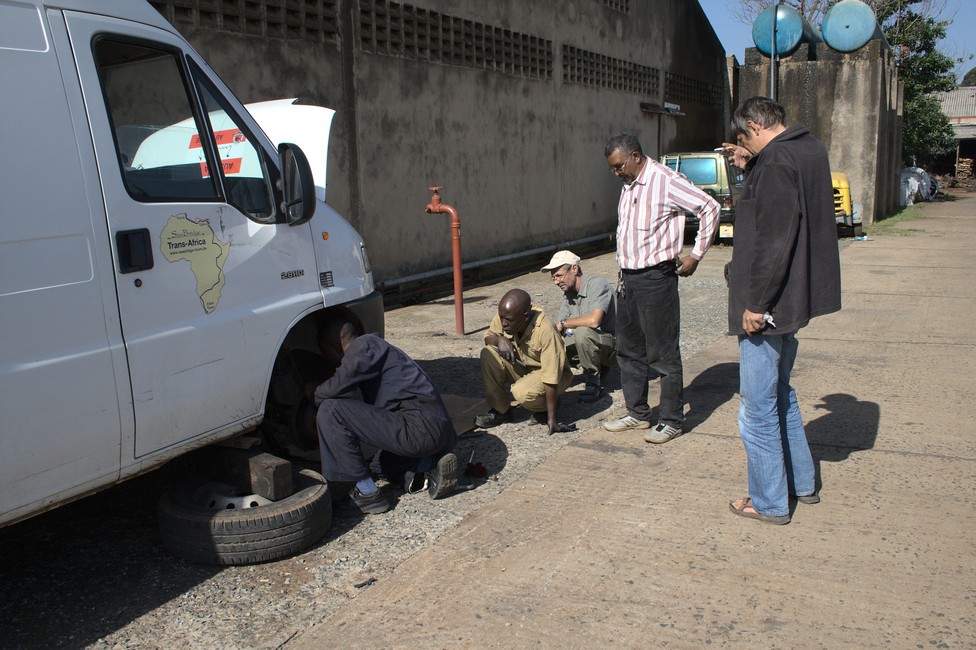A crater lake is still on our agenda. To Lake Kasenda a narrow forest path leads to the campsite. It is on the level of the water surface, which will be fatal as we soon will see.

Lake Kasenda is a crater lake located in western Uganda, in the Kasese District. It’s one of the most scenic crater lakes in the area, with crystal clear waters surrounded by lush vegetation and rolling hills. Visitors to Lake Kasenda can enjoy a variety of activities, such as hiking around the lake, bird watching, and fishing for tilapia and catfish. The lake is also a popular destination for photography and nature lovers, with breathtaking views of the surrounding landscape.
Again, this lake is idyllic. The slopes of the extinct volcano are densely covered with tropical vegetation. We enjoy the peace and quietness here and take a walk along the shore, for a narrow path leads along the lake.

In the night it rained, however, and heavily, which has transformed the black volcanic soil into soft soap.
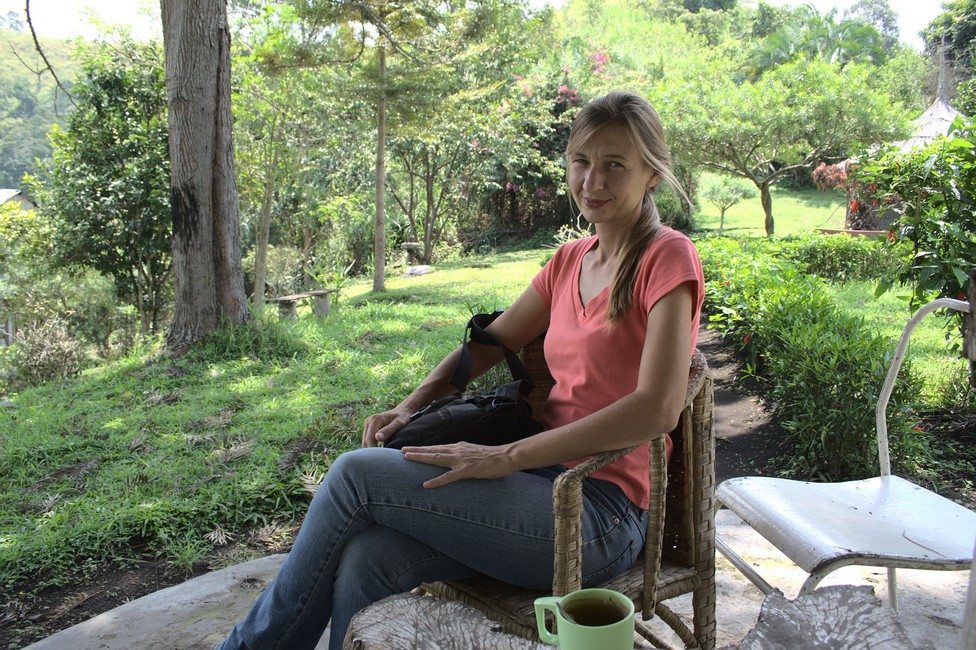
We have massive problems, despite sand ladders to get out of the crater. The van always slips sideways off the track.
With stones in the lane, we try to stabilize the van. And then it happened. The van slipped into a tree and damaged the bodywork on the roof. Bad luck, but our problem is still unresolved. Only with the help of eight boys who held to stabilize the van, we manage our escape.
We are glad to have tar under the wheels again. Our next destination is Queen Elizabeth National Park.
Overall, Lake Kasenda is a hidden gem in western Uganda that offers a tranquil and scenic escape from the hustle and bustle of city life. It’s a great place to relax, unwind, and immerse yourself in the natural beauty of Uganda.
